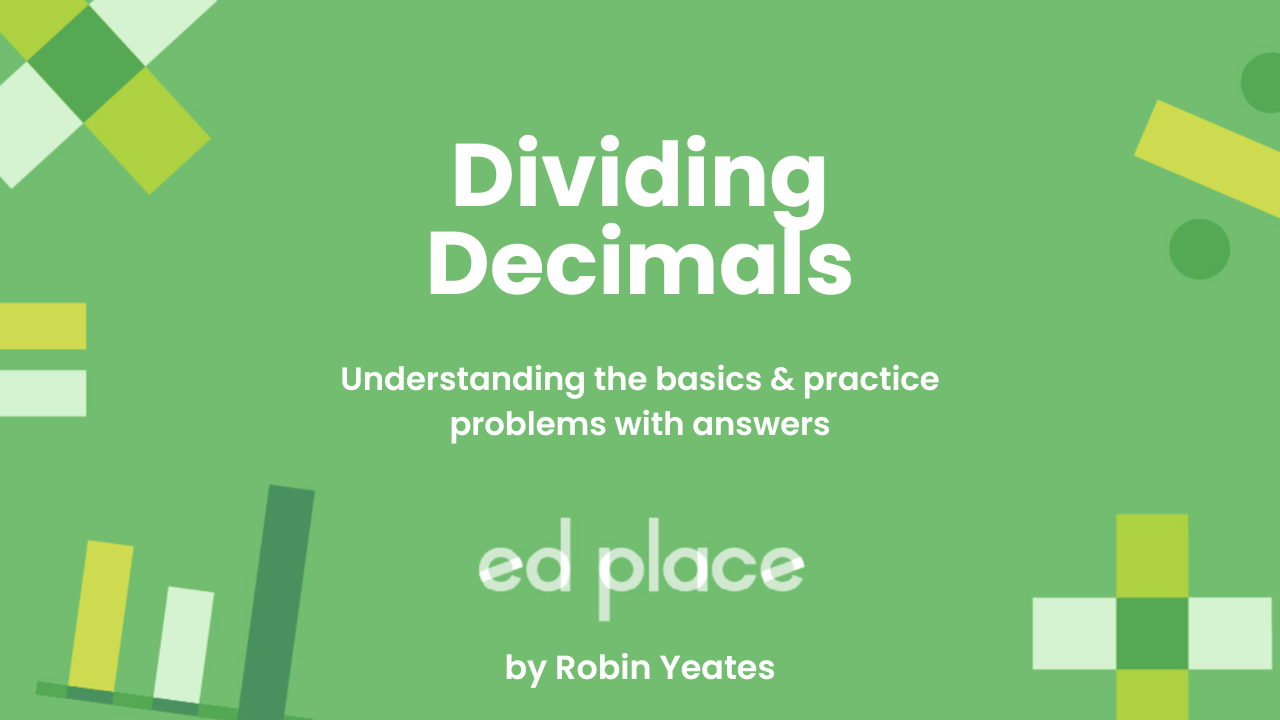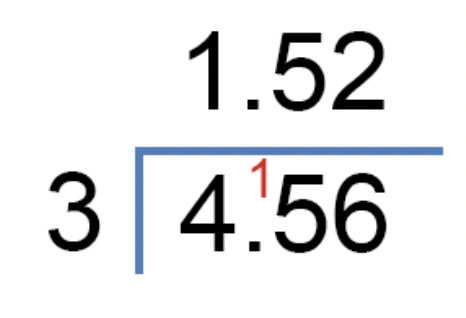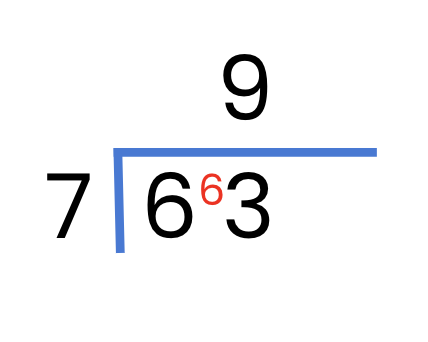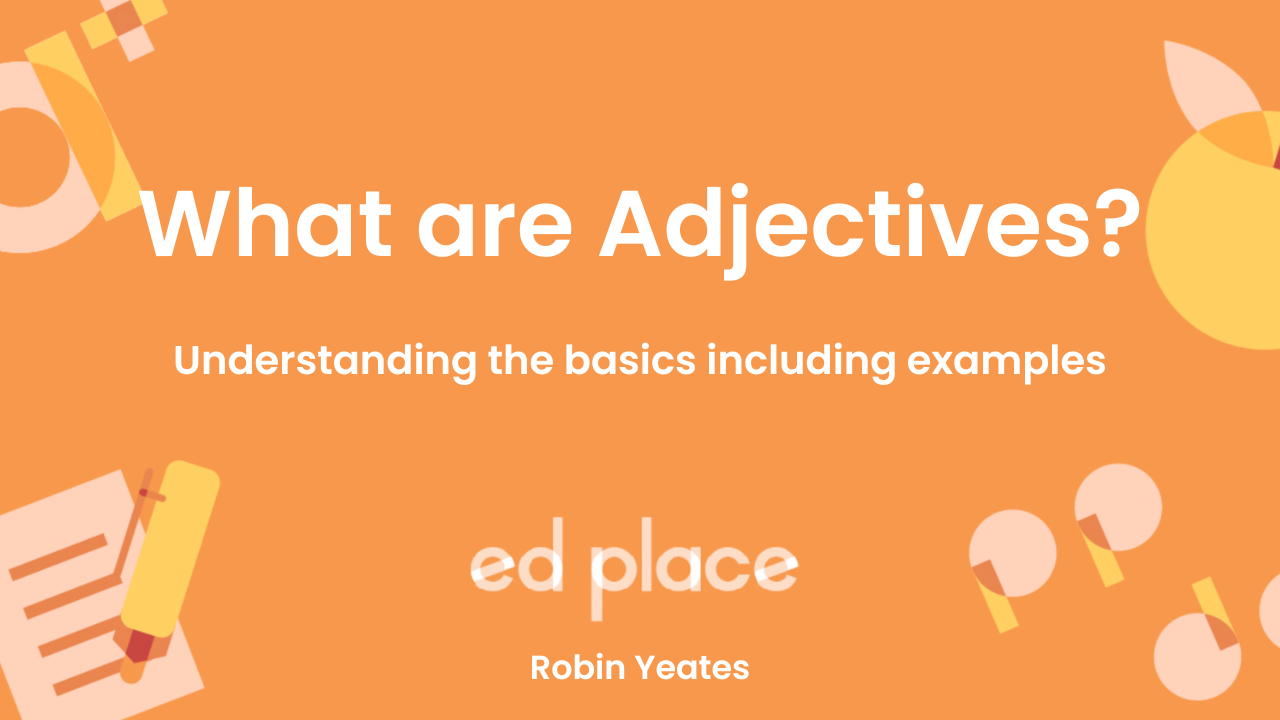Dividing decimals might sound tricky, but it's an essential skill that can simplify many real-world tasks. Whether you're working with money, measuring ingredients, or converting units, understanding how to divide decimals accurately can save you time and prevent mistakes. Let's dive into the process together and master it step by step!

Recap on Regular Division
Before we tackle dividing decimals, it's crucial to understand regular division. Remember, division is sharing a number into equal parts. If you're unsure about some of the methods used in this blog, check out our Bus Stop Method for Division blog to recap how to do regular short division!
Dividing Decimals by Whole Numbers
Dividing decimals by whole numbers might seem challenging at first, but with a systematic approach, it becomes straightforward. Here’s a simple step-by-step method to help you master this process.
1. Setting up the calculation
- Set up the division as you would with whole numbers with the decimal number (dividend) on the inside and the whole number (divisor) outside the ‘bus stop’.
2. Performing Short Division
- Ignore the decimal point and perform the division as if you are dealing with whole numbers.
- Once you have your answer, place the decimal point directly above its position in the dividend.
Example Problem
Question: Divide 4.56 by 3
Steps to Solve:
-
Set up the division: 4.56 ÷ 3
-
Perform the division ignoring the decimal:
- 3 goes into 4 once (1) so add your answer directly above the line, with a remainder of 1. (see the digit in red)
- Carry this to the next digit (5), making it 15.
- 3 goes into 15 five times (5), with no remainder. Add the answer directly above the line.
- 3 goes into 6 two times (2), with no remainder. Add the answer directly above the line.
- Place the decimal point in the quotient (answer) directly above its position in the dividend to give you 1.52
The answer is 1.52 It’s that simple!

You could check your answer by considering if it seems reasonable.
- If it was 6 divided by 3 the answer would be 2
- If it was 3 divided by 3 the answer would be 1
- 4.56 is somewhere between 2 and 6 so an answer between 1 and 2 seems reasonable too!
- If you had put the decimal in the wrong place, for example 15.2, that would not be a reasonable answer given the question
Try some out yourself!
Divide 5.68 by 4
Answer: 1.42
Divide 12.75 by 5
Answer: 2.55
Dividing a Decimal by Another Decimal
Dividing a decimal by another decimal involves some different steps compared to dividing by a whole number, but once you’ve got the hang of it, it’s nice and easy!
The key is to convert the divisor (the number you're dividing by) into a whole number by shifting the decimal point.
Let’s break down the process.
1. Converting the Divisor to a Whole Number
- Identify the number of decimal places in the divisor.
- Multiply the divisor by 10, 100, or 1000, etc., depending on how many places you need to shift the decimal to the right to make the divisor a whole number.
2. Adjusting the Dividend Identically
- Multiply the dividend (the number being divided) by the same amount e.g. 10, 100 or 1000, etc.
- Note - If you’ve done this step and the dividend is still a decimal, that’s ok. We just covered dividing a decimal and a whole number above!
- Set up the division as you would normally.
3. Performing the Division
- Ignore the decimal points (since you converted the divisor into a whole number).
- Perform the division as you would with whole numbers.
- Place the decimal point in the quotient (answer) directly above its new position in the adjusted dividend.
Example Problem
Question: Divide 6.3 by 0.7
Steps to Solve:
- Convert the divisor (0.7) to a whole number by multiplying by 10.
- 0.7 x 10 = 7
- Do the same to the dividend (6.3), multiply by 10.
- 6.3 x 10 = 63
- This gives you 63 ÷ 7
- Perform the division:
- 7 can’t go into 6 so carry the 6 to the next digit making 63
- 7 goes into 63 nine times (9), with no remainder.
The answer is 9. Simple as that!

Now you try…
Divide 4.8 by 0.4
Answer: 12
Divide 7.56 by 0.6
Answer: 12.6
Practice Makes Perfect
Now that we've covered the steps to divide decimals by whole numbers and other decimals, it's time to put your knowledge to the test.
Here are five practice questions for you to have a go at.
Don’t forget you can just scroll back up if you get stuck:
1. Divide 3.24 by 2
Answer: 1.62
Explanation: Divide as usual, aligning the decimal point in your answer.
2. Divide 5.5 by 1.1
Answer: 5
Explanation: Convert 1.1 to 11 by multiplying by 10 then do the same to 5.5 making 55, then divide 55 by 11.
3. Divide 8.64 by 4
Answer: 2.16
Explanation: Perform short division, aligning the decimal point in your answer.
4. Divide 9.45 by 0.3
Answer: 31.5
Explanation: Convert 0.3 to 3 by multiplying by 10 then do the same to 9.45 to give you 94.5. Then divide 94.5 by 3, aligning the decimal point in your answer.
5. Divide 7.2 by 6
Answer: 1.2
Explanation: Divide as usual, aligning the decimal in your answer.
Dividing decimals doesn't have to be daunting. By following the steps we’ve talked about and making sure you practise lots with different questions, you’ll be more than confident to tackle any dividing decimals questions head-first!
Fancy trying some now?
Why not take a look at some of our other worksheets on this topic…



.png)
.png)
.png)




